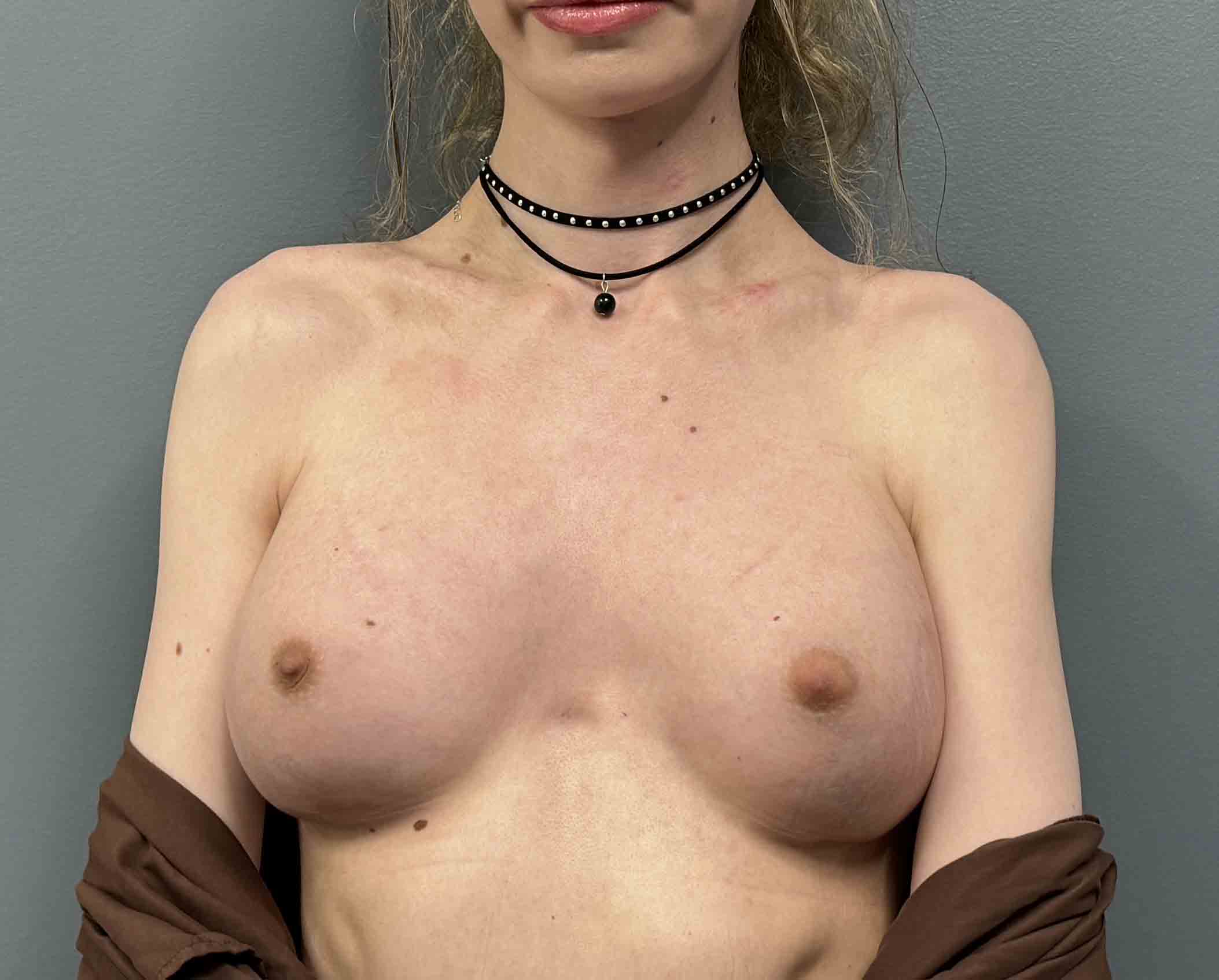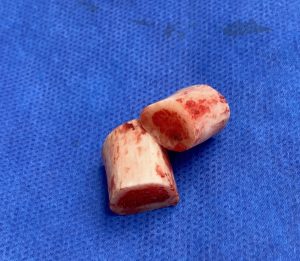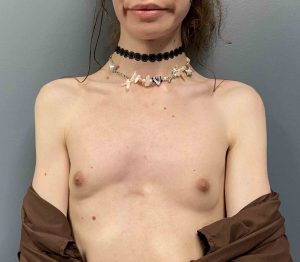Background: Wide shoulder dysphoria is not uncommon in transfemales for which clavicle reduction osteotomies provides an effective treatment for it. The major recovery issue in such shoulder reduction surgery is the limited use of the arms in the early recovery. Keeping the arms from full abduction and extension avoids a distraction effect on the reunited ends of the shortened clavicle bone. One of the causes of any postoperative discomfort from this surgery is the pectorals major muscle, whose origin is on the clavicle and the insertion is on the humerus of the upper arm. It is the release of some of these muscles fibers at the osteotomy site that is a major source of postoperative pain. Thus keeping the arms close to one’s side after surgery helps mitigate some of the discomfort by limiting the stretch on the muscle.
Breast augmentation is also a part of some transfemale’s body change efforts. This well known procedure, usually done underneath the pectorals major muscle, also has an impact on the recovery process. The immediate expansile force of the implant underneath the muscle is the major source of postoperative discomfort. The release of some of its lateral fibers along the ribcage for pocket creation is a minor cause of the discomfort. But unlike shoulder reduction, where limitation of arm motion early after surgery is essential, in breast augmentation it is the opposite. Early range of arm motion is encouraged as it helps stretch out a big ‘pulled’ chest muscle and makes it feel better sooner.
Since both shoulder reduction and breast augmentation are part of the body contouring options for transfemales it is logical for patients to ask if they can be done during the same surgery and how will that affect recovery. Technically they can be done together and what controls the recovery is the limited arm motion protocol from the shoulder reduction. The fact that one can not fully move their arms is inconsequential to the breast implant recovery.
Case Study: This female desired a combined shoulder reduction and breast augmentation. She had asymmetric shoulder lengths with a bideltoid distance of 48.5cms. She had breast asymmetry from a history of pectus excavated and a prior pectus bar placement and subsequent removal.
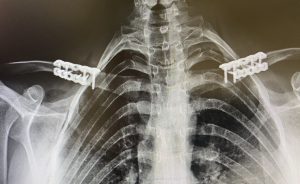
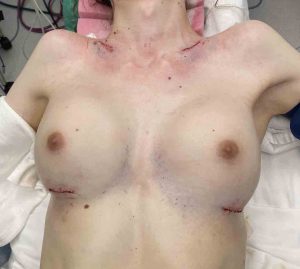
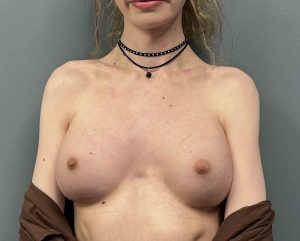
Beyond the recovery concerns, which turns out there aren’t any, these are two operations that are synergestic. More narrow shoulders makes the breasts look bigger and vice versa. Shoulder reduction may not make the aesthetic desire for larger breasts go away but it may be possible that breast augmentation may make the shoulder dysphoria less. However since shoulder dysphoria has a lot to do with the appearance in clothes and how they fit breast implants alone is probably not likely to fully address shoulder width dysphoria.
Key Points:
1) Breast implants can be placed at the same time as that of shoulder reduction surgery.
2) The diametric effects of shoulder reduction and breast enlargement are synergistic, each one enhancing the effect of the other.
3) Both upper torso surgeries affect the pectoralis major muscle which has interesting but not adverse impacts on recovery.
Dr. Barry Eppley
World-Renowned Plastic Surgeon

